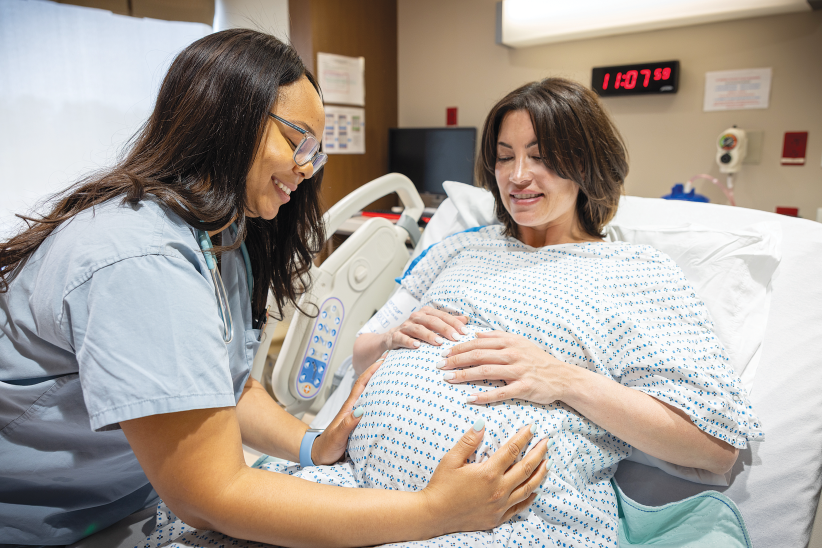Describing a recent illness involving a sore throat, many people will often explain that they “had strep.” However, the phrases “sore throat” and “strep throat” are not as interchangeable as they perhaps seem.
One of the most common physical ailments, “sore throat” is typically caused by either a viral or bacterial infection. In all age groups, viral pharyngitis is the predominant cause of a sore throat.
Less common is bacterial pharyngitis, which may be caused by a variety of different pathogens. The most common is the bacteria responsible for strep throat – Streptococcus pyogenes. Also referred to as group A streptococcus (GAS), S. pyogenes is highly contagious and can spread through airborne droplets when an infected individual sneezes, coughs or breathes. Strep thrives when people are in close contact with each other and is most commonly seen in the late fall to early spring. Left untreated, strep throat may lead to serious complications including rheumatic fever, scarlet fever and kidney infection.
Who Is at Risk?
In adults and children younger than 5, only 5 to 15 percent of sore throats are caused by strep. In contrast, strep throat represents nearly 30 percent of sore throats in children and teens between the ages of 5 and 15.
How Can I Tell If My Child Has Strep Throat?
There is a great deal of overlap between a viral sore throat and strep throat. Ultimately, strep throat is diagnosed through testing. However, there are clues that can help you decide if your child’s sore throat is viral or bacterial in origin. Viral sore throats are often accompanied by symptoms of a common cold, such as congestion, a runny nose, sneezing, laryngitis, postnasal drip or a cough. These infections will likely resolve in a few days without any intervention. In comparison, someone suffering from strep throat is more likely to experience a fever (101 or higher), red and swollen tonsils with white patches, and tender and swollen lymph nodes under the chin and in the neck.
What Tests Are Used?
If your doctor suspects strep throat, he will likely perform a rapid strep test or RST. This involves a quick swab of the throat and the results are available within minutes. If this test is negative but your doctor still suspects strep throat, he may perform a throat culture which needs to be sent to a lab for analysis. Throat culture results may take up to two days to come back. Both tests are quick and painless, but may cause mild gagging.
How Is Strep Throat Treated?
If your child is diagnosed with strep throat, your doctor will likely prescribe antibiotics. Your symptoms should begin to improve within 48 hours. If they persist or worsen, you should contact your doctor.
When Is a Tonsillectomy Necessary?
In children with recurrent cases of strep throat, a tonsillectomy may be recommended to reduce the frequency of infection. However, while tonsillectomies remain the second most common type of surgery performed on children in the United States, there has been a significant decrease in the number of tonsillectomies performed to treat recurrent strep throat over the past 30 years. The current guidelines recommend tonsillectomy if your child has had seven episodes of strep throat in the past year, five per year in the past two years, or three per year in the past three years. If your child has had less frequent episodes, their recurrent strep may be managed medically.
Children who have had tonsillectomies will typically see a reduction in frequency of strep infections as well as a reduction in the severity of their symptoms. Without a tonsillectomy, children who experience recurrent strep throat may naturally see a decrease in infections as they age.
Like all surgeries, tonsillectomies include risks such as bleeding, infection and reactions to anesthetics. Patients and parents should discuss the risks and benefits carefully with their physician before making a decision.
Katharine Dermigny is a member of the New York Medical College ENT interest group. Mona Gangar, M.D. is a pediatric otolaryngologist at The Children’s Hospital at Montefiore. She is also an assistant professor at the Albert Einstein College of Medicine.









